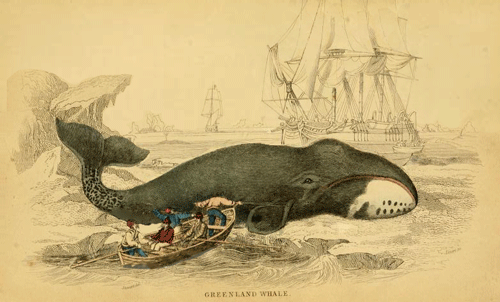Here’s one way to get the kids interested in libraries again: turn the archives into whimsical little GIFs, like the ones found on the Smithsonian Libraries Tumblr.
The Smithsonian has 20 different museums, each with its own library, and over the past two decades the staff has digitized almost 40,000 of the institution's volumes. That adds up to a whopping 14 million pages of rich, historical material, covering everything from biodiversity to the history of aeronautics to African art. Problem is, most people don’t realize that this wealth of (free!) information is available to the public.
To stoke public interest in the material, some of the Smithsonian Libraries' staff have harnessed the magnetism of the GIF. For about a year now, animated versions of the archives have been popping up on the library's social media channels. It’s a neat little hack: Richard Naples, the technical information specialist who makes them, looks for digitized images with simple backgrounds that can be easily chopped, copied, pasted, and animated into a few frames in Photoshop. Like any good librarian, Naples has a consummate, comprehensive knowledge of the images at hand. From there, it’s just a matter of “browsing through, looking for anything that might be compelling to tell a little story,” he says. “It’s what it was like to be a child, and the way you imagine things coming to life.”
Naples made his first Smithsonian GIF in April 2012. It featured a monkey jumping over a fence, and he adapted it from old film from a praxinoscope, a device from the 1800s that was half slide projector, half flip book. It was an easy get, since praxinoscope film already had several frames that could create a moving illustration. In order to wade deeper into the archives, Naples taught himself how to animate with Photoshop. Nonetheless, all the images---even the ones that need modern software tools to jump and wiggle around---have a sepia-hued, steampunk look to them, because Naples can legally only alter images copyrighted before 1923.
According to copyright laws, those works are in the public domain. That ceiling—working with images from before 1923—might seem like a handicap for Naples and the Smithsonian Libraries' social media efforts, but in all likelihood it’s a boon to them and younger users who otherwise would never know this material exists. "With digitizing collections, a lot of people bemoan the loss of serendipity and getting lost in browsing in a library," Naples says. "I see this as a new way to explore the collection in a more serendipitous way instead of just based on a search."
Anecdotally, Naples says the animated loops have helped several groups of researchers and hobbyists connect to new material. One group of Washington, DC history "aficionados" got in touch with the Libraries, and Naples helped them find some digitized, but metaphorically dusty, photos of the capitol. They were delighted. As for the GIFs that get the most attention? "Butterflies and skeletons," Naples says. "People love butterflies and skeletons."
